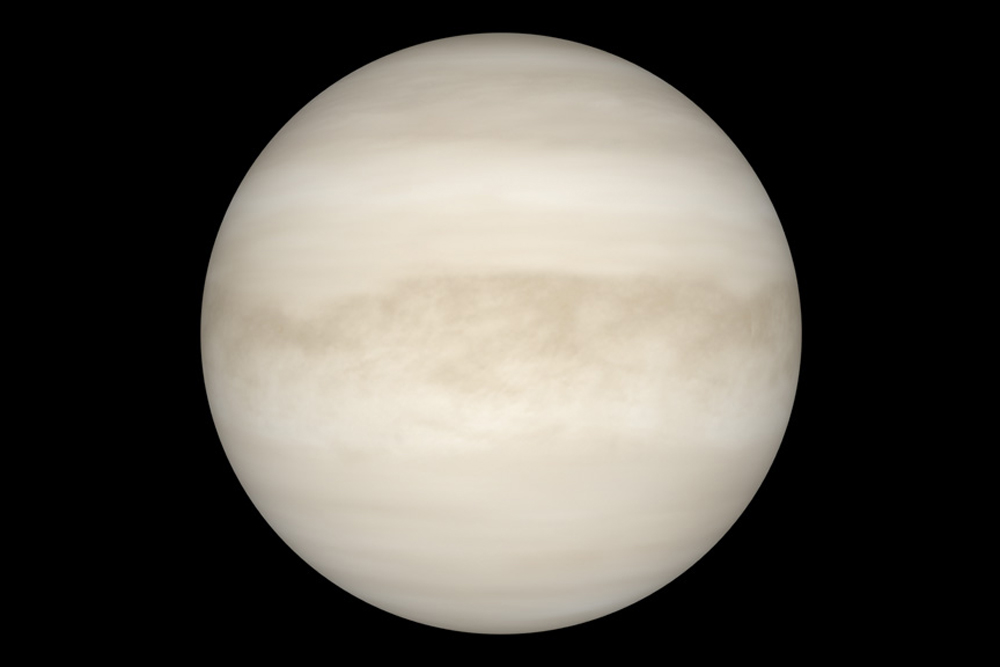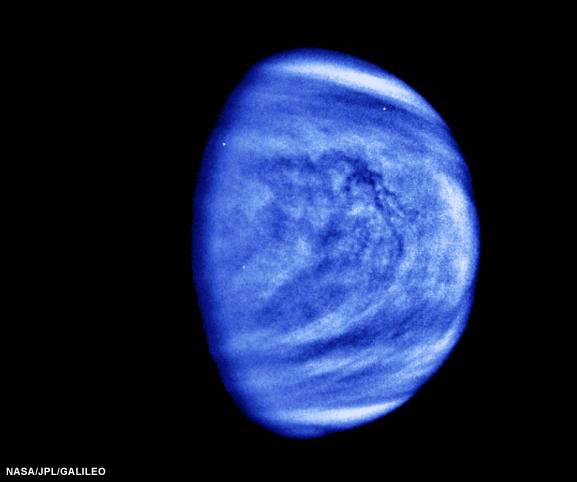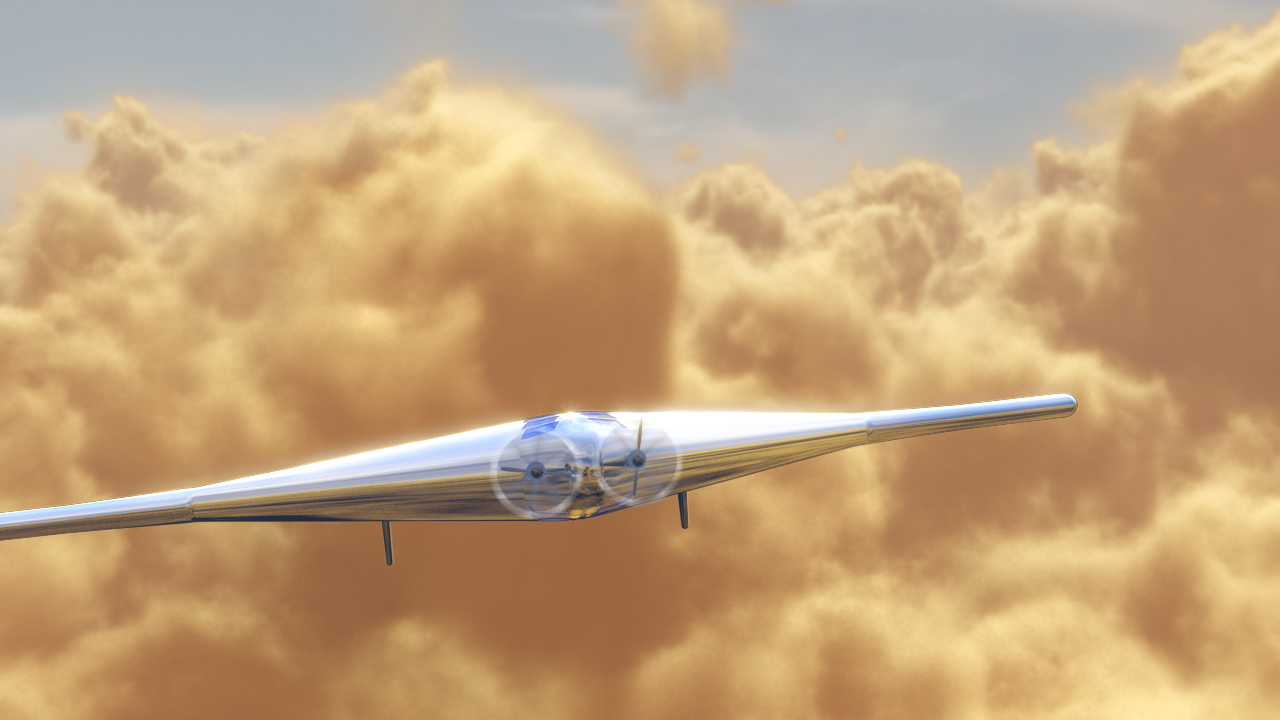Russia, US Mulling Joint Mission to Venus

Russia's space program and NASA are working together on a mission to Venus that would investigate some of the scorching-hot planet's biggest mysteries, including, perhaps, whether it harbors life.
An international team of scientists tasked with fleshing out the main goals of the mission, which is known as Venera-D, is wrapping up its work and will deliver its final report to NASA and the Russian Academy of Sciences' Space Research Institute by the end of the month, said David Senske, of NASA's Jet Propulsion Laboratory in Pasadena, California.
"Is this the mission that's going to fly? No, but we're getting there," Senske, the U.S. co-chair of this "joint science-definition team," told Space.com last month at the annual fall meeting of the American Geophysical Union, in San Francisco. [Mysterious Venus: 10 Weird Facts]
A long time coming
Venera-D is led by Russia, which has been developing the project for more than a decade. The mission would mark a return to once-familiar territory for the nation; Russia's forerunner state, the Soviet Union, launched a number of probes to Venus from the early 1960s through the mid-1980s, as part of its Venera and Vega programs. ("Venera" is the Russian name for Venus.)
"Russia has always been interested in going back to Venus," Senske said.
NASA got involved about three years ago, when Russia asked if the U.S. space agency would be interested in collaborating on the mission, Senske added.
The joint science-definition team arose out of those initial discussions. The team stood down shortly thereafter; Russia's March 2014 annexation of Crimea prompted NASA to suspend most cooperation with Roscosmos, Russia's federal space agency (with activities involving the International Space Station being the most prominent exception).
Get the Space.com Newsletter
Breaking space news, the latest updates on rocket launches, skywatching events and more!
But the collaboration was up and running again by August 2015, Senske said, and the team met in Moscow that October. More meetings are planned, including a workshop this May that will inform decisions about the mission's scientific instruments, he added.

An orbiter, a lander and more?
Venera-D is a large-scale mission, comparable in scope to NASA "flagship" efforts such as the $2.5 billion Curiosity Mars rover, Senske said. The baseline concept calls for an orbiter that will study Venus from above for at least three years, plus a lander that will operate for a few hours on the planet's surface.
Mission planners said they had originally hoped the lander could survive for 30 days; the "D" in Venera-D stands for "dolgozhivushaya," which means "long lasting" in Russian. But this goal was ultimately deemed too difficult and costly, given the blistering temperatures on Venus' surface, according to RussianSpaceWeb.com (which outlines the mission's tortuous history in rich detail).
Data gathered by the orbiter should help scientists better understand the composition, structure and dynamics of Venus' atmosphere, including why the planet's air rotates so much faster than the surface does, a mysterious phenomenon known as super-rotation, Senske said.
The lander will collect further atmospheric information while descending, then study the composition and morphology of the Venusian surface after touching down.
Venera-D could incorporate additional components as well. Some ideas on the drawing board include a handful of small, relatively simple ground stations that would gather surface data for a month or so (putting the "D" back in Venera-D) and a solar-powered, uncrewed aerial vehicle that would ply the Venusian skies.
The surface of Venus is far too hot to support life as we know it, but temperatures are much more hospitable at an altitude of 31 miles (50 kilometers) or so. Furthermore, the planet's atmosphere sports mysterious dark streaks that some astronomers have speculated might be signs of microbial life. The UAV could hypothetically investigate this possibility, sampling the air while cruising along.
Engineers have already been thinking about how to build such an aircraft. For example, the U.S. aerospace company Northrop Grumman and partner L'Garde Inc. have been researching a concept vehicle called the Venus Atmospheric Maneuverable Platform (VAMP) for several years now.

Early days still
It's still too early to know exactly what Venera-D will look like, what it will do or when the mission will launch. A liftoff in 2025 or 2026 is possible under an "aggressive" time line, Senske said. "It depends when the Russians can get this into their federal space budget," he said.
Some things are known, however. For instance, Russia will build the orbiter and the lander, and Venera-D will launch atop Russia's in-development Angara A5 rocket, Senske said. If NASA remains involved in the mission — which is far from a given at this point — the U.S. space agency will likely contribute smaller items, such as individual scientific instruments.
"Russia is definitely in the driver's seat," Senske said. "NASA is the junior partner."
Follow Mike Wall on Twitter @michaeldwall and Google+. Follow us @Spacedotcom, Facebook or Google+. Originally published on Space.com.
Join our Space Forums to keep talking space on the latest missions, night sky and more! And if you have a news tip, correction or comment, let us know at: community@space.com.

Michael Wall is a Senior Space Writer with Space.com and joined the team in 2010. He primarily covers exoplanets, spaceflight and military space, but has been known to dabble in the space art beat. His book about the search for alien life, "Out There," was published on Nov. 13, 2018. Before becoming a science writer, Michael worked as a herpetologist and wildlife biologist. He has a Ph.D. in evolutionary biology from the University of Sydney, Australia, a bachelor's degree from the University of Arizona, and a graduate certificate in science writing from the University of California, Santa Cruz. To find out what his latest project is, you can follow Michael on Twitter.









